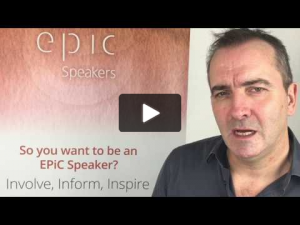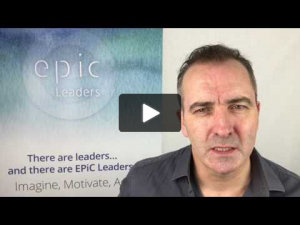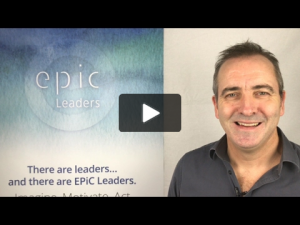
Humans are creatures of habit, feeling at their most comfortable thinking, believing and doing things in the way they are used to. Have you ever tried to undo a long-term habit? It takes effort.
At The Performance Business we are passionate about face to face communication. I was thinking the other day (as I cleaned my road bike) why are we so passionate about it? What stimulates us to want to teach communication skills to other people? It came down to the desire to make people feel really good about themselves and about others.
When you go out of your way to say something nice and give thoughtful praise to another person, it amplifies your own self-confidence and nourishes your self-esteem. It has a positive impact on the other person too. A win-win, one could say.
Some people love to compliment. Others are not in the habit of complimenting or praising others at all. Or, they will reserve their compliments for those they feel most comfortable with, friends, family etc.
Actually, if they knew just how powerful a compliment can be, they would be doing it much more.
You can make someone’s day by sharing your positivity in the form of a genuine compliment. Not only that, you can increase communication and productivity just by saying something positive.
Giving a compliment is the most obvious way in which you can create this sense of positivity around you. People can be reticent because they think it will come across as:
- Cheesy
- Embarrassing
- Offensive
- Fake
Some also associate an element of risk with giving a compliment:
“what if the person doesn’t believe me?”
“what if the other person blocks it – what am I going to say then?”
“What if people overhear it and think I’m trying to manipulate or impress?”
“what if I embarrass them?”
And so on. There are loads of excuses NOT to give a compliment. It takes us out of our personal zone for a start. We have to make an effort without seeing a personal gain. We aren’t in the mood, etc, etc. We spiral into our own thoughts and come up with all sorts of excuses why it’s not a good idea.
Stop! Let me share with you why it is a GREAT idea!
- When you go out of your way to say something nice and give thoughtful praise to another person, it amplifies your own self-confidence and nourishes your self-esteem.
- You can make someone’s day by sharing your positivity in the form of a genuine compliment.
- Giving a compliment is the most obvious way in which you can create this sense of positivity around you.
It is time to stop being reticent about doing this.
A compliment is simply one way to demonstrate your appreciation of another person. So what is the best way to give a compliment?
Here’s a process to get you going:
1.Consider the Environment
There are very few circumstances where a compliment will be unwelcome. As you develop the habit of giving compliments, choose the right environment. Consider public or private domain. Consider whether the other person is ready to welcome you into their personal space.
2. Be specific
When giving the compliment make sure it is clear and heard! To help you do this, practice it in your head before you say it. As you approach the person make sure you are present i.e. the most important thing in your mind at that moment is the opportunity to give something of value to the other person.
3. Be congruent
When you give the compliment, make sure that your body language is in alignment with your verbal message – use welcoming gestures, be still and avoid any nervous leakages (fidgeting hands, restless feet, etc etc.) Smile! This is a transaction of joy that you are giving – not an ordeal! In other words, mean what you say.
4. Be Persistent
It could be that your compliment is initially blocked; the other person might be shy and self-deprecating, they might be surprised by the compliment and block it, they might just disagree. The thing is, that you need to believe the compliment yourself before your deliver it! Expect it to be blocked in some way and welcome this as a further opportunity to reinforce your compliment with a more specific example of why you believe it to be true. Here’s an example:
You: “Hi Sam, I am so grateful for your insights in the report”
Sam: “Oh, thanks, but the deadline was looming, I’m not sure I got it across quite as I wanted”
You: “ Please know it reads extremely well and I was left in no doubt about your conclusion it was very well evidenced. Impressive.”
Sam: “Thanks – you’ve made my day!”
5. Sustain the compliment
You can sustain the compliment by being specific, as in the example above, but also with your body language making sure you stay in the moment – for instance not looking to move away before you hear the response. Another way of sustaining the compliment and making sure its sticks is to keep the thought of what you have said in your head, once you have verbalised it.
You will notice that when you keep the thought in your head for longer than you might think is comfortable, the thought becomes more compelling. You are sticking to your guns and not prepared to change your opinion. This form of leadership (giving a compliment) helps to build your reputation as an open, genuine and committed leader or colleague or friend.
6. Don’t wait for a compliment back!
Remember, this compliment is given without an agenda! It does not require reciprocity. Be happy in the thought that you have brightened someone’s day.
Your challenge – give the next person you meet a compliment, however trivial it seems and see how it changes the energy of your conversation. Remember – it must be genuine.
To arrange a no obligation conversation with one of our Consultants, click here.
Regards
Mike


















